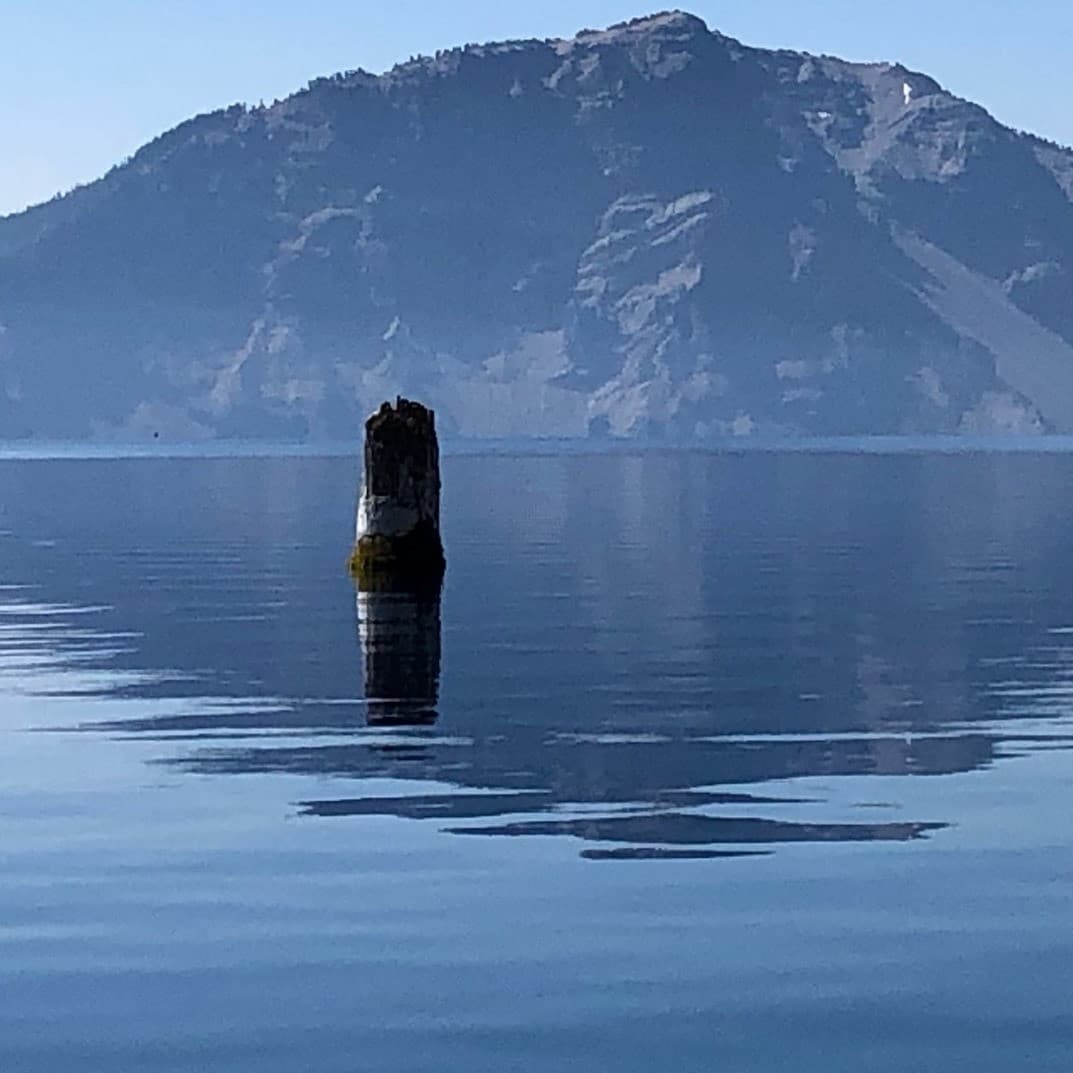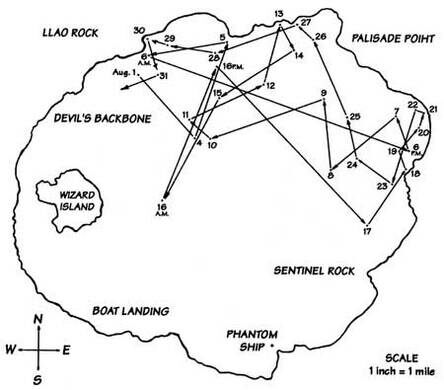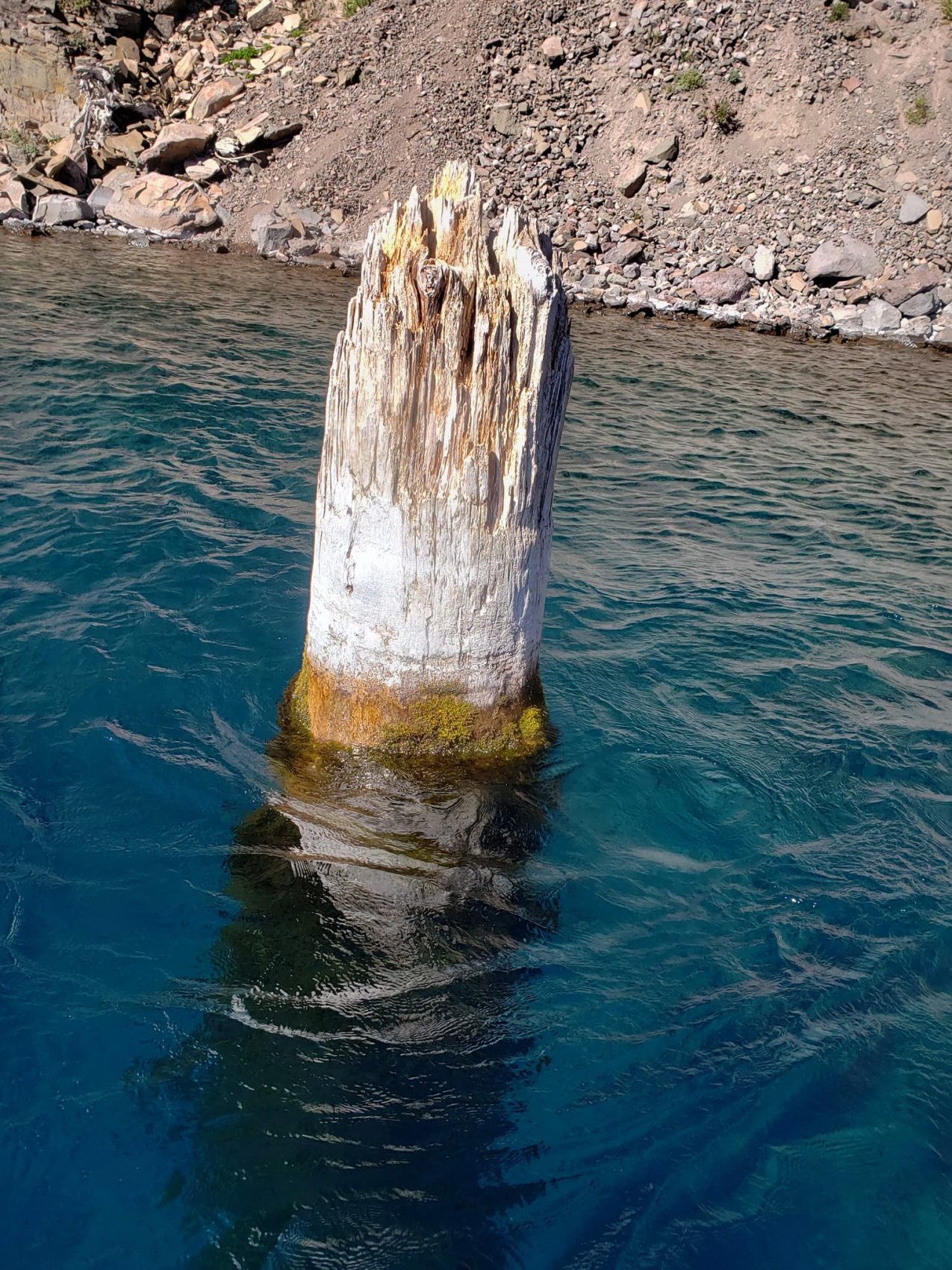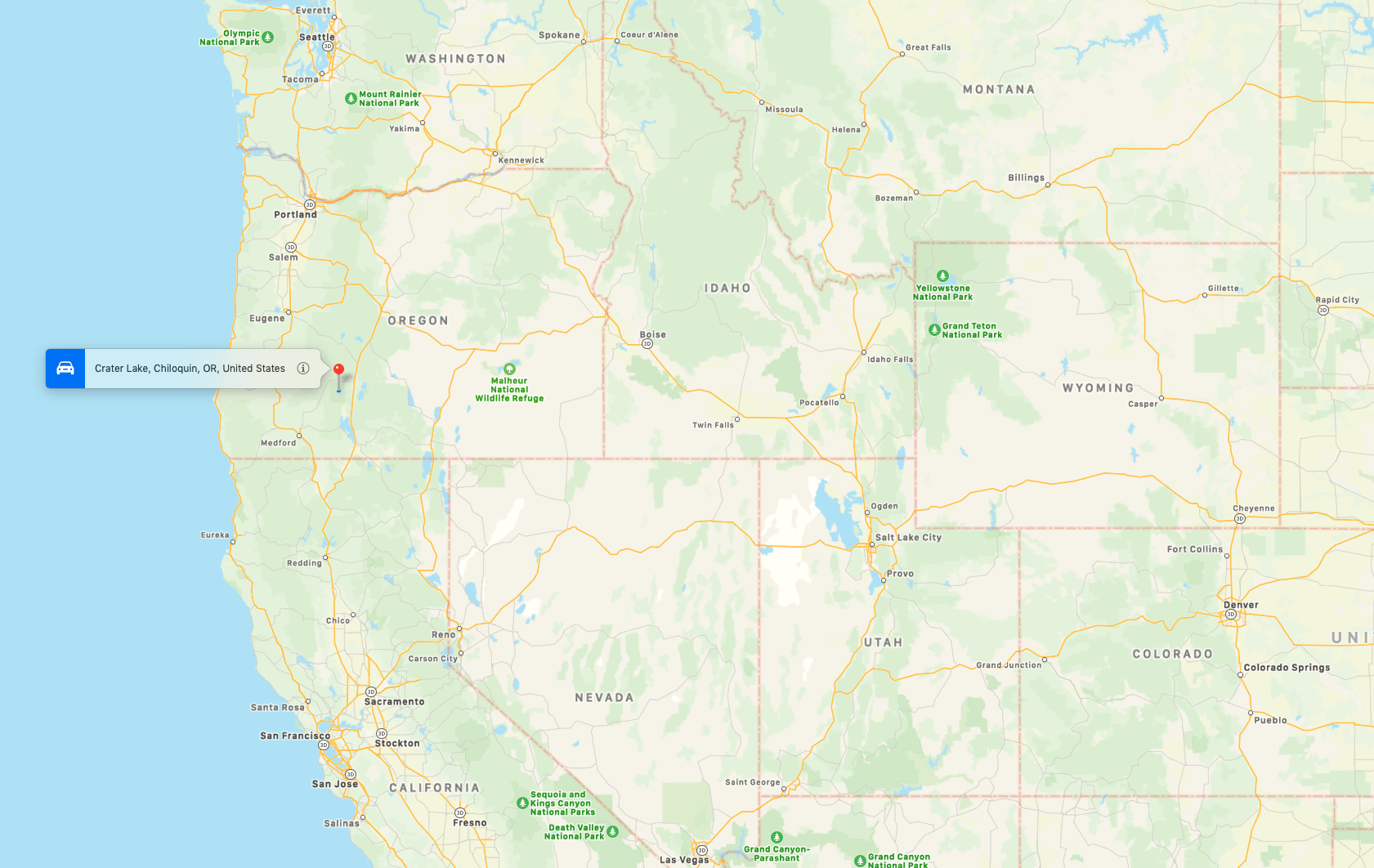
The Old Man is a celebrity favorite among visitors and Rangers alike who always look to spot him on Crater Lake. Actually, he is not a person at all, but, instead, the Old Man is a 30-foot mountain hemlock log that has, (at least since 1896), floated vertically and continuously in the Lake, with about 3+ feet of the stump above water.
His actual age has been carbon-dated to more than 450 years old, though the physics of his upright stance remains a mystery, as do his seemingly random travels across the surface of Crater Lake. Theories on his orientation abound, and though not proven, the commonly held belief is that because the lower part of the tree stump has been in the cold water for over a hundred years, its density has increased, making the Old Man buoyant and balanced.
His travels were first tracked in 1896 by Joseph Diller, an early Park geologist who completed the sketch below. The curiosity surrounding the Old Man continued to grow, and, in 1938, Washington D.C commissioned a study of his travels. Between July and October, “Old Man” traveled 62.1 miles, an average of .67 miles/day, with his maximum daily distance of 3.8 miles achieved on August 6th.

Some believe that the Old Man controls the weather at Crater Lake and woe be to those who mess with him. As the story goes, in 1988, when the Park brought in a submersible to explore the Lake bottom, the researchers concerned about running into “Old Man” tied him up on the eastern shore of Wizard Island. Shortly thereafter, storms blew in, making it impossible to launch the submersible at all. When this was quickly followed by snow in August, the scientists very quietly (under cover of night) released “Old Man” back into the Lake, thus restoring the weather and the Old Man’s freedom.
Perhaps the Old Man is best summed up by Scott Girdner, an aquatic biologist here at Crater Lake, who explains that the Old Man is much more than a floating log. “He has character, a story, and history that is part of the park.”

Crater Lake is a crater lake in south-central Oregon in the western United States. It is the main feature of Crater Lake National Park and is famous for its deep blue color and water clarity. The lake partly fills a nearly 2,148-foot-deep (655 m) caldera formed around 7,700 (± 150) years ago by the collapse of the volcano Mount Mazama. No rivers are flowing into or out of the lake; the evaporation is compensated for by rain and snowfall at a rate such that the total amount of water is replaced every 250 years. With a depth of 1,949 feet (594 m), the lake is the deepest in the United States. In the world, it ranks ninth for maximum depth and third for mean (average) depth.
